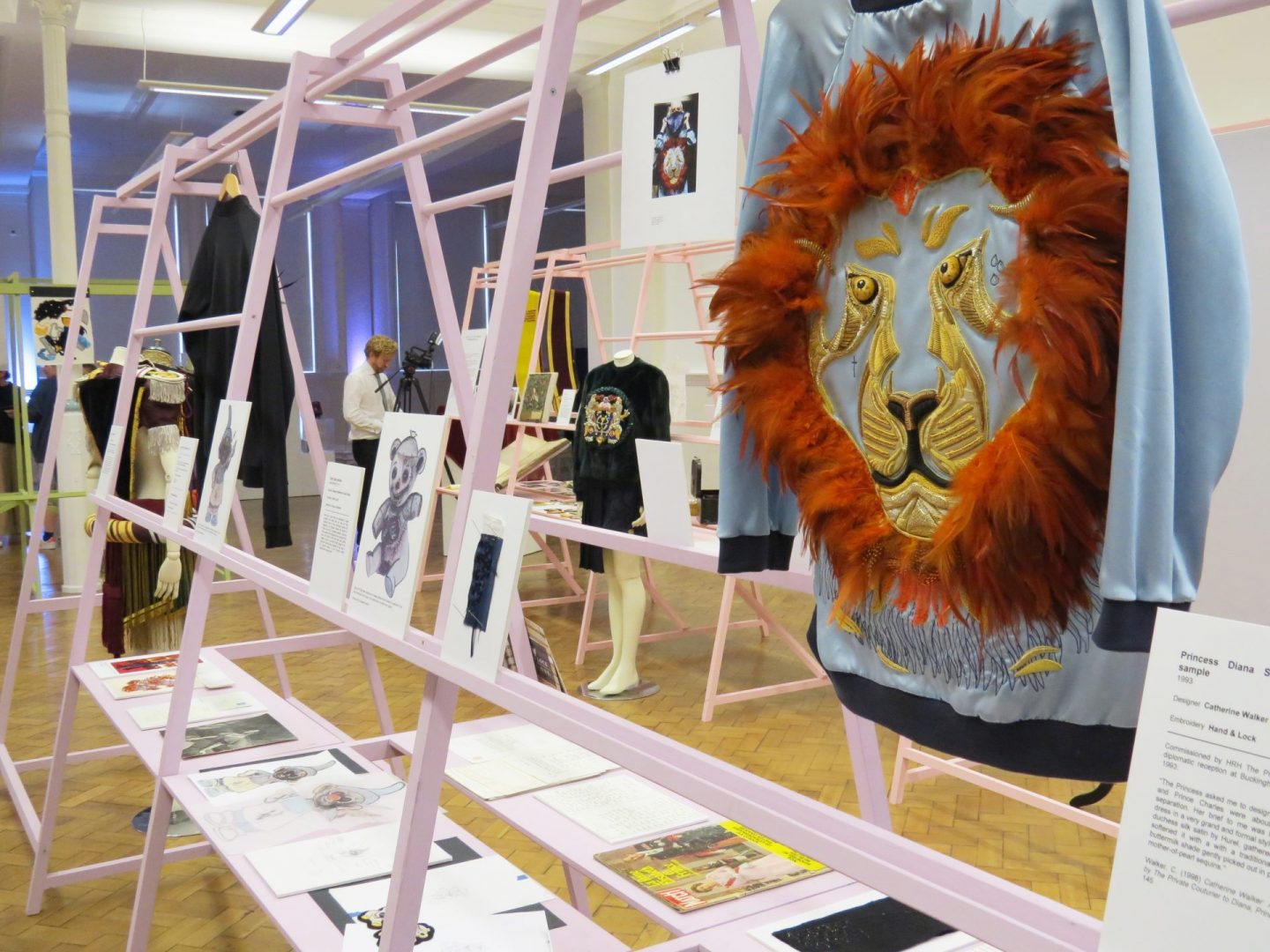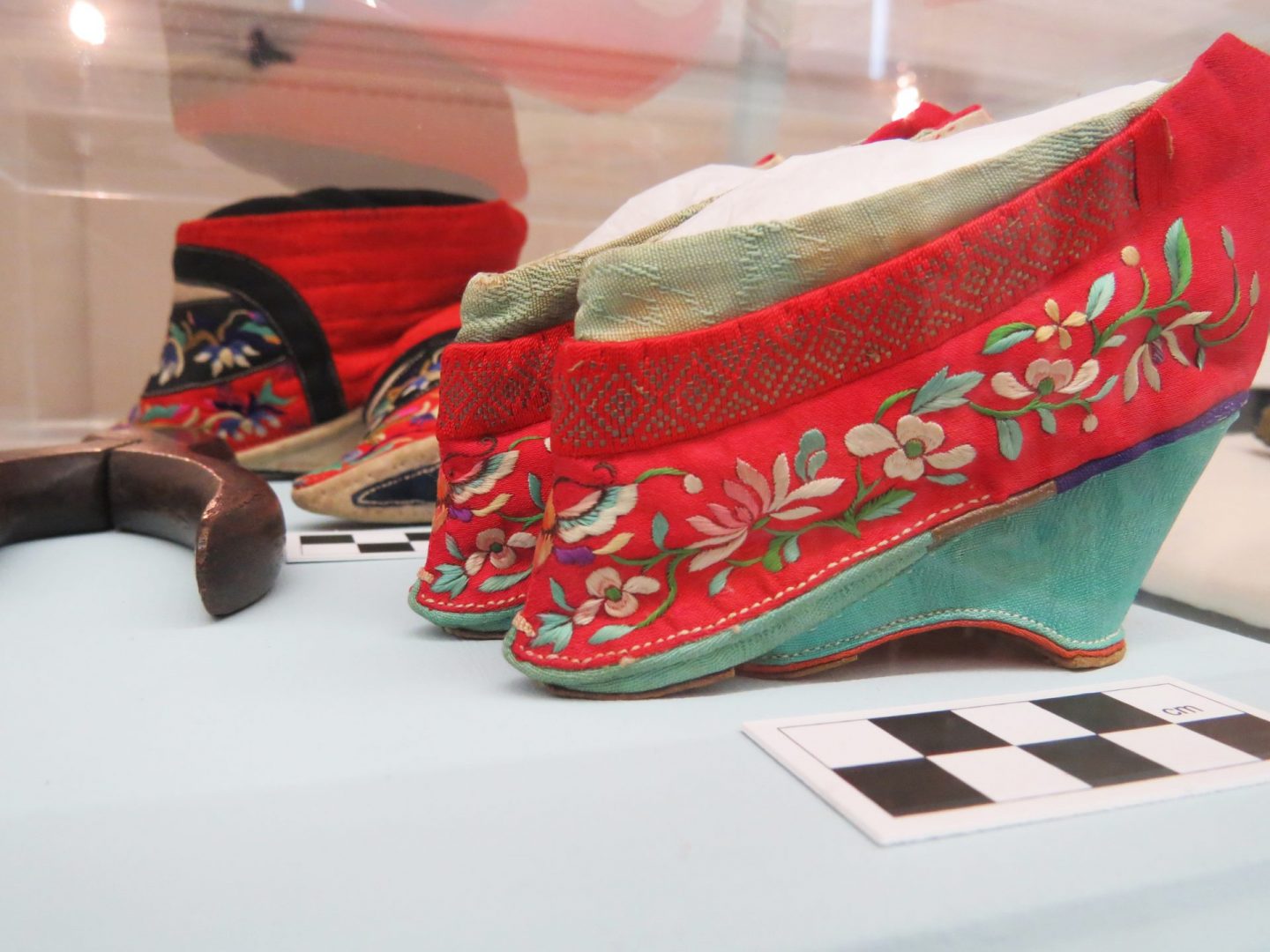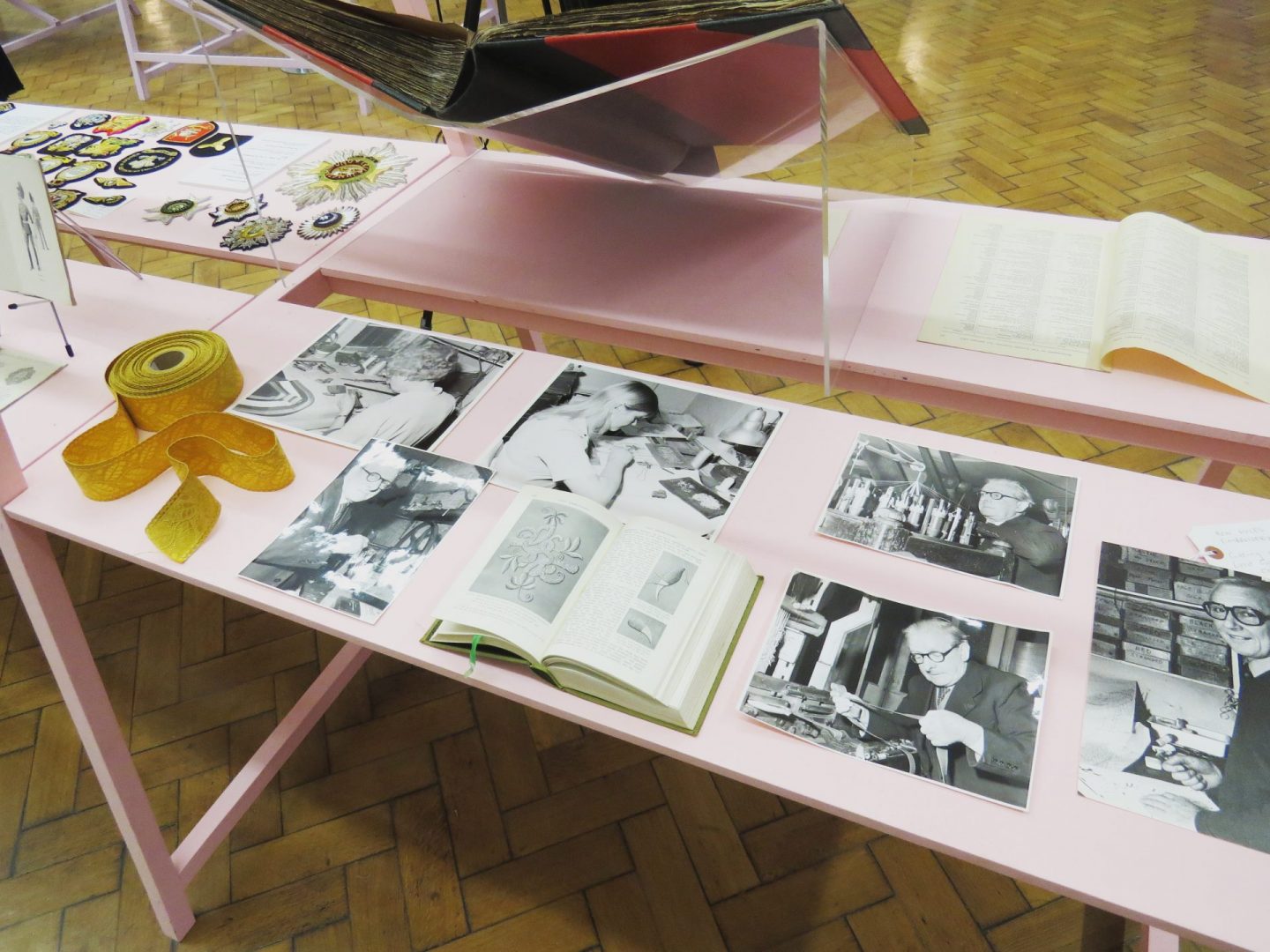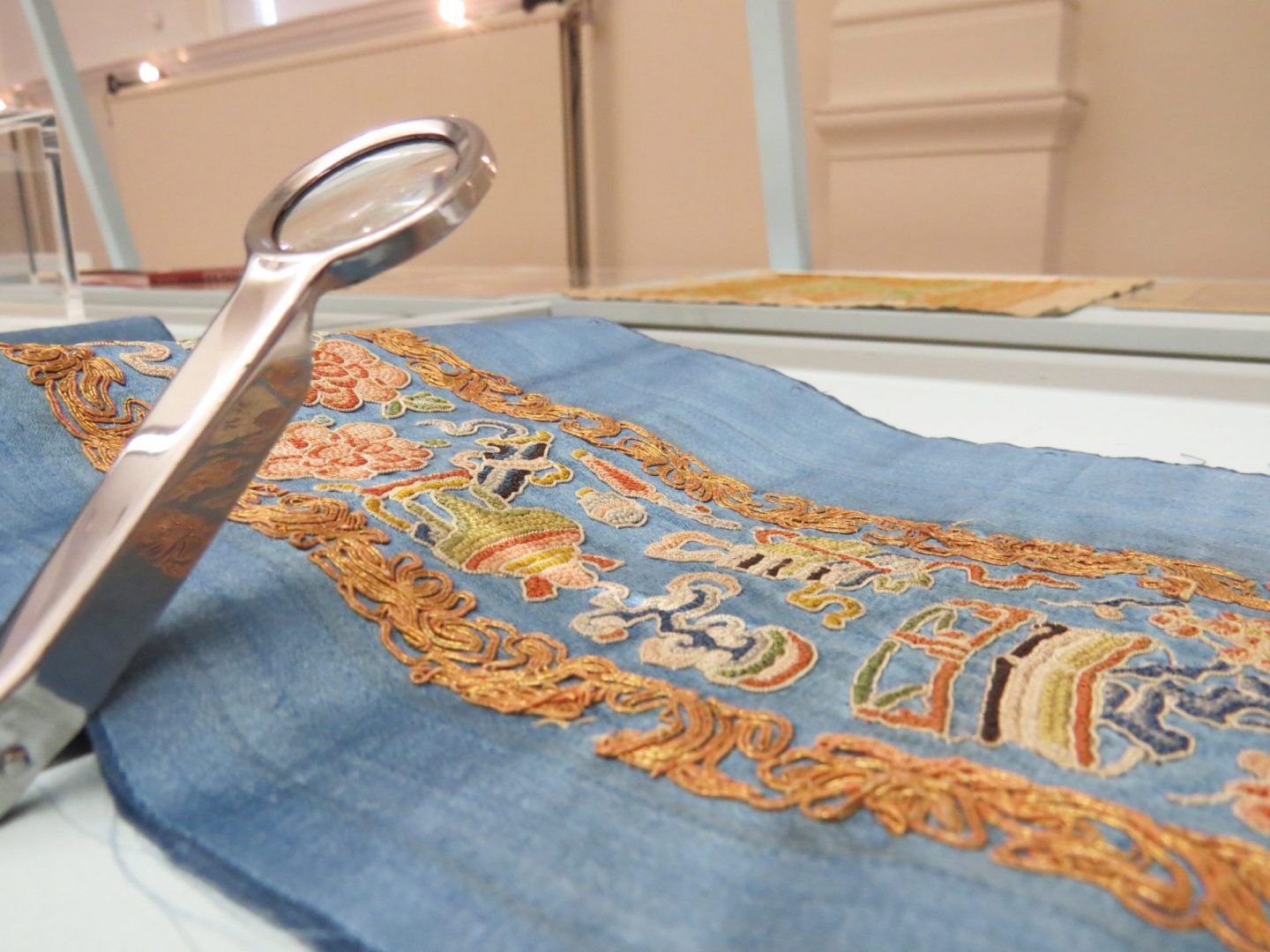

The exhibition had been painstakingly put together by a team of expert curators funded by the London College of Fashion. Exhibited were items on loan from the Textile Research Centre, The Lightfoot Archive, The London college of Fashion Archive, The Diana Springall Collection and the Bishopsgate Institute Archives.
All these articles were carefully interwoven with special pieces from the Hand & Lock atelier and archive. For two days hundreds of visitors carefully examined examples of military embroideries, modern textile artworks and cultural embroidery from around the world.
Divided into ‘zones’, the first display offered visitors a chance to marvel at the 13 embroidered handbags produced for the 250th anniversary. The exhibit was accompanied by a film produced to explain the project and reveal more about the charities that will benefit from funds raised at the December auction.
Moving clockwise around the hall visitors could next immerse themselves in a grand history of craftsmanship, seeing up close a restored Victorian ledger dating from 1880 alongside the traditional embroidered military badges M. Hand became famous for making. In this section the curators placed a Hand & Lock embellished jumper by the designer Mary Katrantzou who had been partly inspired by historic embroidered badges just like the ones on display. This mixture of old and new demonstrated the eternal quality of the embroidery techniques used.


In the centre of the hall guests were invited to discover the myriad of designer collaborations, and read the handwritten letters from Christian Dior, Hardy Amies alongside embroidery samples for Catherine Walker and the Emmanuels. Here, guests were treated to the spectacle that is the Nicholas Oakwell designed ‘Great British Dress’, commissioned by the UK government to promote British craftsmanship. The dress, first modeled by Erin O’Connor, took 800 hours to embroidery and was worked on by both the embroiderers of Hand & Lock and The Royal School of Needlework.
The next section encouraged visitors to immerse themselves and be inspired by cultural and artistic embroidery expressions from around the globe. Here internationally renowned textile artist’s work was exhibited along side pieces that evoked ancient cultural traditions. To everyone’s fascination this section featured the ‘Forbidden Stitch’, an embroidery stitch so small it was banned in China for allegedly contributing to poor eyesight and even blindness. The curators also exhibited works by Inge Jacobson, Hannah hill and ‘Nice Threads, Mate’ that showed embroidery as a purely artistic expression.
Finally, we looked to the future and exhibited work by the most promising graduates from LCF alongside three exceptional pieces that had recently been submitted to the H&L Prize for embroidery.
Visitors to the pop up embroidery exhibition experienced 360 degrees of embroidery; its history, its cultural significance, its ability to forge collaboration and its bright future. It may have been the 250th anniversary of Hand & Lock but the celebrations were about everyone who embroiders and everyone who loves to create.


